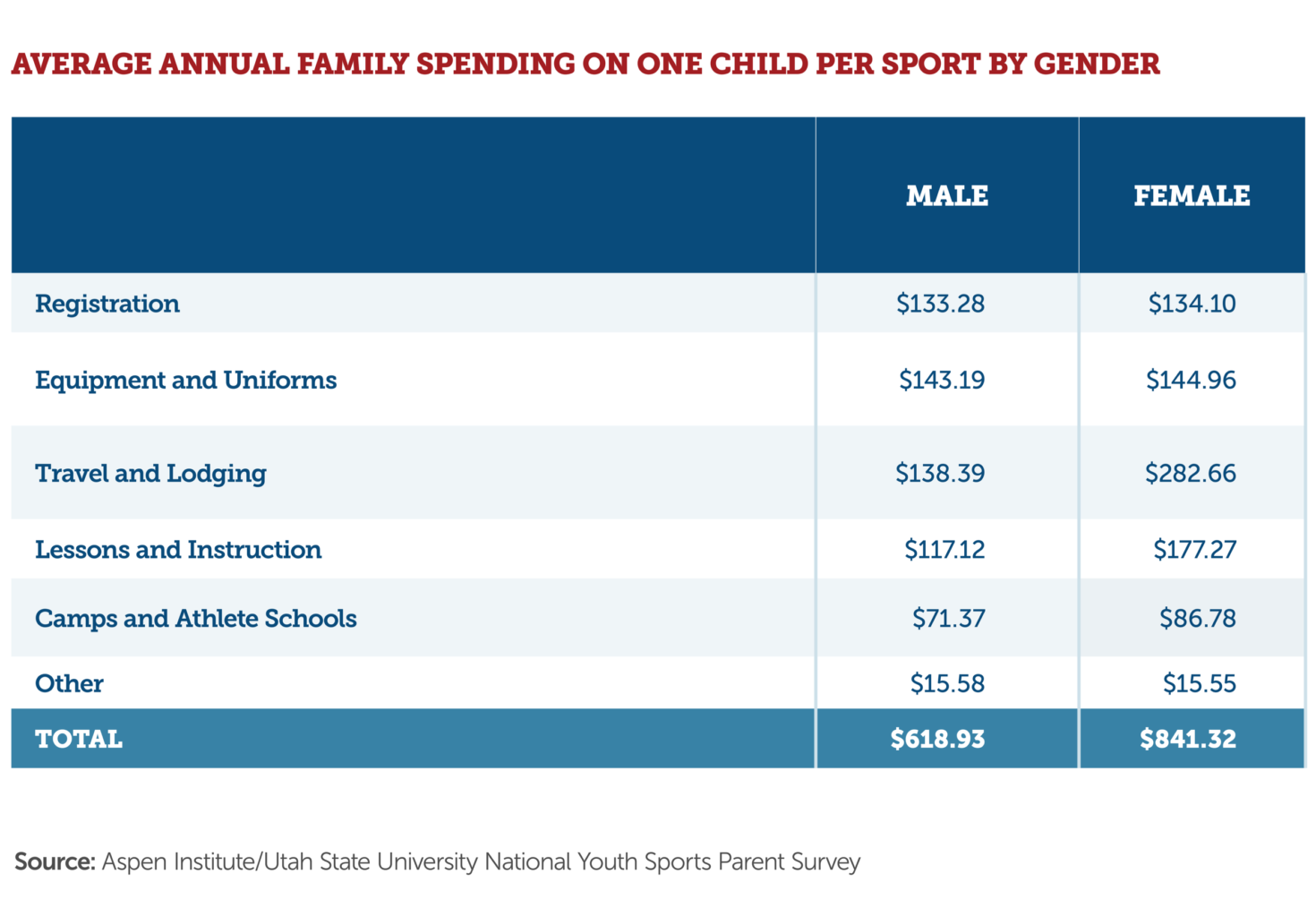Although the participation rate of girls in youth sports remains lower than that of boys, those girls’ parents are now spending more on those sports than are the parents of boys.
In its survey, the Aspen Institute’s Project Play team found that parents on average are spending $228/year more on their daughters than their sons. Those expenses include travel lodging, lessons, and camps among other things.
Specifically, the organization found that “29% of families with a girl in sports dedicate more than 1% of the family’s gross annual income to sports, compared to 23% of families with a boy in sports. Even the largest amounts of spending tilt slightly toward girls. About 3% of parents of girls reported allocating more than 10% of their family’s income to sports vs. 2% of parents of boys spending that much.”

Why the difference? For starters, some girls’ sports – including volleyball, gymnastics, and tennis – are pricier than traditional boys’ sports (football and baseball). Additionally, parents of female swimmers spend far more on the sport than do the parents of boys ($1,033/year vs. $385/year).
Additionally, parents only recently started exploring the idea of athletic scholarships for their daughters. As the study’s lead author, Dr. Travis Dorsch, stated, today “parents are seeking and providing sport opportunities for their girls with the same vigor that they traditionally have for their boys.”
All of which makes sense given that beginning as far back as 1996 there were more women’s teams competing in NCAA-sanctioned activities than those of males. That figure has only increased in recent years, with 2019 showing 10,660 women’s teams versus 9,226 men’s teams.
That said, athletic scholarships for males still outpace those of women, largely due to the huge roster sizes of tackle football teams.
The increase on spending for girls’ sports also comes with a more significant downside: the greater the level of parental spending, the more likely kids of all ages and genders are to report feeling pressure from mom and dad and less enjoyment from the sport.

Are there specific trends or societal changes influencing this shift in parental spending on youth sports? Visit Us Telkom University